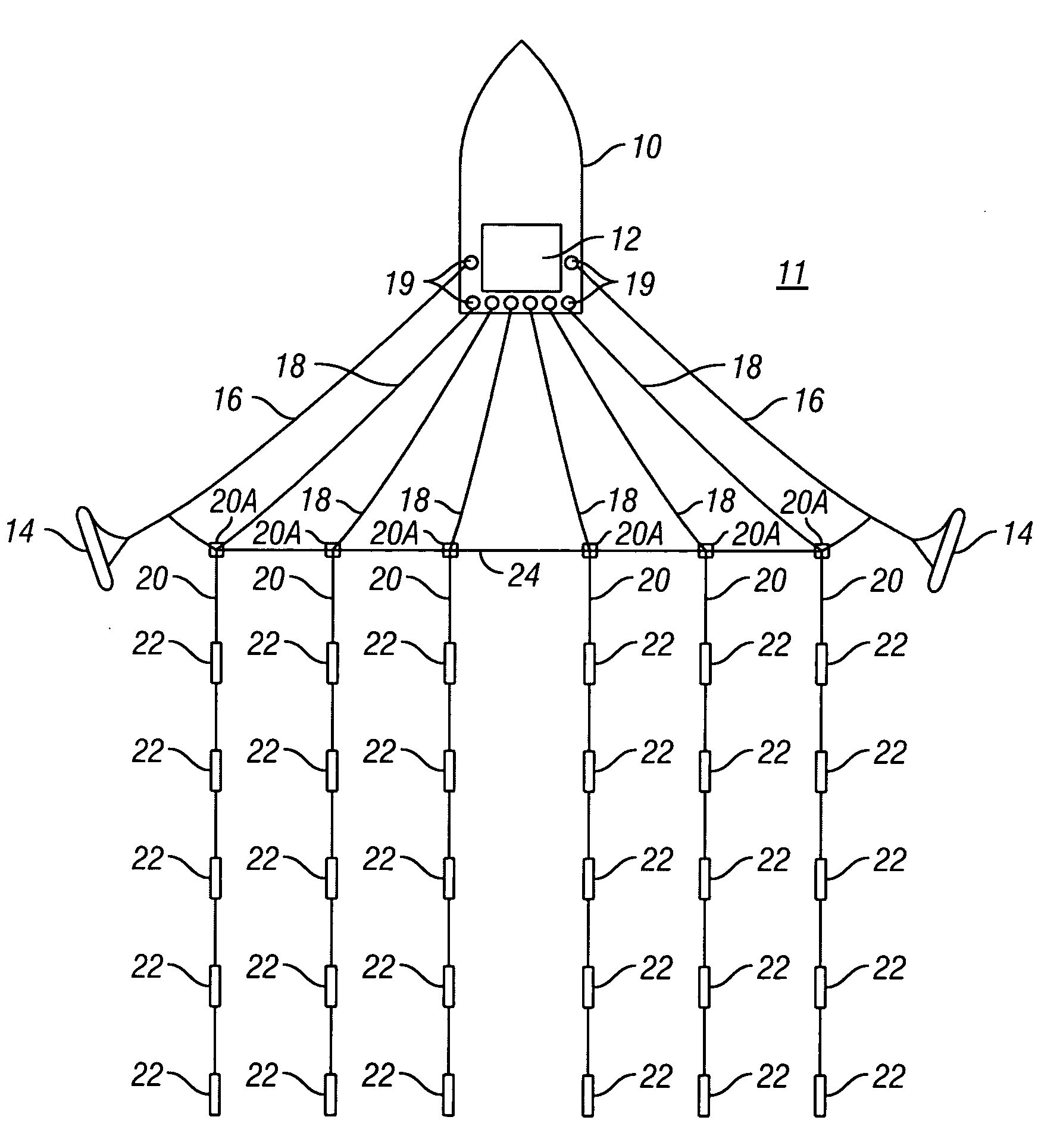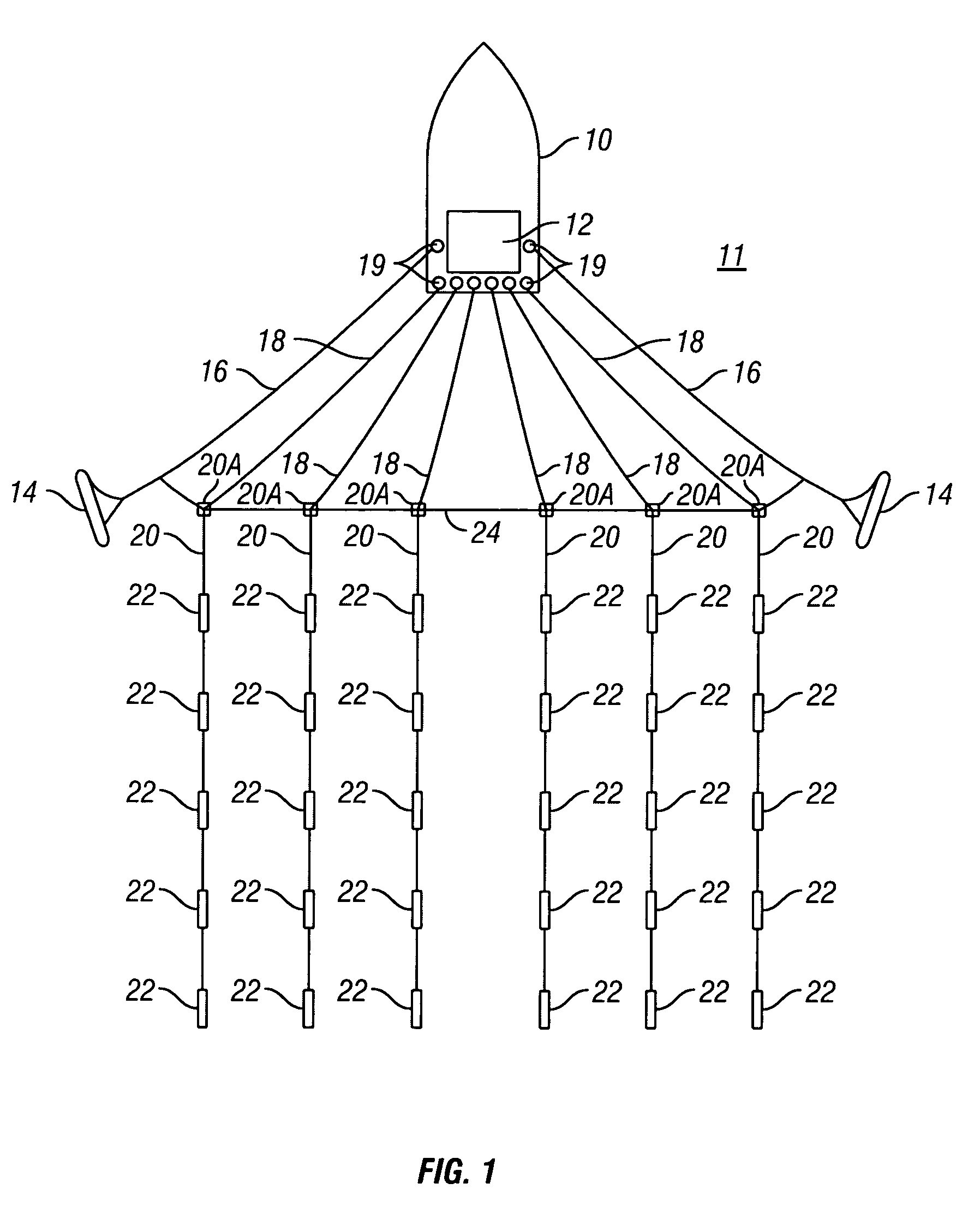Steerable diverter for towed seismic streamer arrays
a diverter and streamer technology, applied in the field of marine seismic survey systems, can solve the problems of reducing the efficiency with which a survey can be performed, the lateral force of the outermost paravane when the vessel turns, and the drag produced by the movement in the water
- Summary
- Abstract
- Description
- Claims
- Application Information
AI Technical Summary
Benefits of technology
Problems solved by technology
Method used
Image
Examples
Embodiment Construction
[0022]FIG. 1 shows a typical marine seismic survey system that can include paravanes and / or paravane connecting bridles according to the various aspects of the present invention. FIG. 1 shows a seismic vessel 10 that moves along the surface of a body of water 11 such as a lake or the ocean. The seismic vessel 10 may include thereon certain electronic equipment, shown at 12 and for convenience collectively called a “recording system.” The recording system 12 typically includes a recording unit for making a record with respect to time of signals detected by various seismic sensors in the survey system. The recording system 12 also typically includes navigation equipment to determine at any time the position of the vessel 10 and each of a plurality of seismic sensors 22 disposed at spaced apart locations on streamers 20 towed by the vessel 10. The foregoing elements of the recording system 12 are familiar to those skilled in the art and are not shown in the Figures for clarity of the i...
PUM
 Login to View More
Login to View More Abstract
Description
Claims
Application Information
 Login to View More
Login to View More - R&D
- Intellectual Property
- Life Sciences
- Materials
- Tech Scout
- Unparalleled Data Quality
- Higher Quality Content
- 60% Fewer Hallucinations
Browse by: Latest US Patents, China's latest patents, Technical Efficacy Thesaurus, Application Domain, Technology Topic, Popular Technical Reports.
© 2025 PatSnap. All rights reserved.Legal|Privacy policy|Modern Slavery Act Transparency Statement|Sitemap|About US| Contact US: help@patsnap.com



